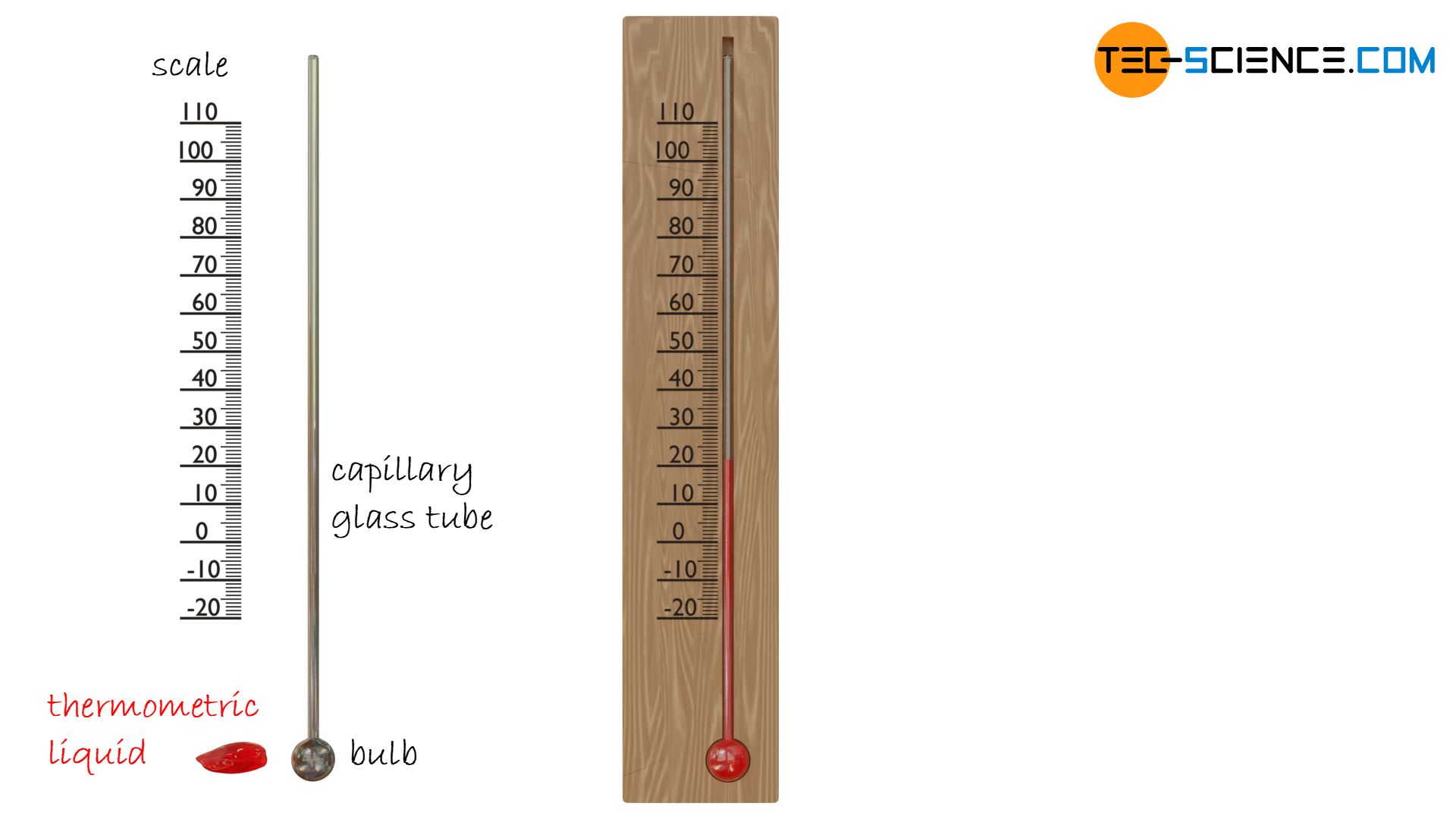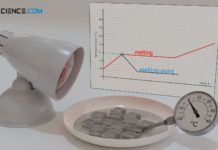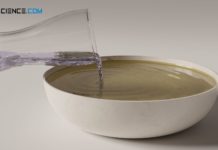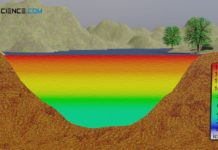In liquid-in-glass thermometers, the thermal expansion of liquids is used for measuring the temperature!
Operating principle
Liquid-in-glass thermometers are based on the principle of thermal expansion of substances. A liquid in a glass tube (called a capillary) expands when heated and contracts when cooled. A calibrated scale can then be used to read off the respective temperature that led to the corresponding thermal expansion. Such thermometers are also called capillary thermometers.

In liquid-in-glass thermometers, the thermal expansion of liquids is used for measuring the temperature!
Thermometric liquids
The liquids used in such thermometers must have certain properties in order to be suitable for use. For example, they must not freeze at low temperatures, which is why water, for example, is not suitable. The liquids should also have a sufficiently high boiling point so that they do not vaporize at high temperatures. Furthermore, the liquid must expand evenly with the temperature in the measuring range used. Otherwise an uneven division of the scale on the thermometer would be necessary. Also for this reason water is not suitable, since water expands unevenly due to the density anomaly.
However, liquids which have all the required properties and are therefore suitable for use in liquid-in-glass thermometers are also referred to as thermometric liquids. In the past, the highly toxic mercury was used, which has a solidification temperature of -39 °C and a boiling temperature of 357 °C. Nowadays, usually blue or red colored ethanol (alcohol) with a melting point of -115 °C and a boiling point of 78 °C is used instead of mercury. In this temperature range, the everyday temperatures in the range between -20 °C and +50 °C can be well covered.
Measuring sensitivity
The measuring sensitivity of liquid-in-glass thermometers increases with the amount of liquid in the thermometer. The more liquid there is, the more liquid will expand and rise in the glass tube. For this reason, liquid thermometers have a reservoir to increase the amount of liquid in the thermometer. Too much liquid, however, would cause the thermometer to react very slow to temperature changes, as the heating of the liquid will take longer and the liquid will take longer to adapt to the outside temperatures to be displayed.
Note
Mercury was/is used not only because of the wide temperature range (theoretically applicable from -39 °C to 357 °C) but also because mercury hardly wets the glass tube. The capillarity is therefore lower and the temperature can be displayed and read off more accurately.






